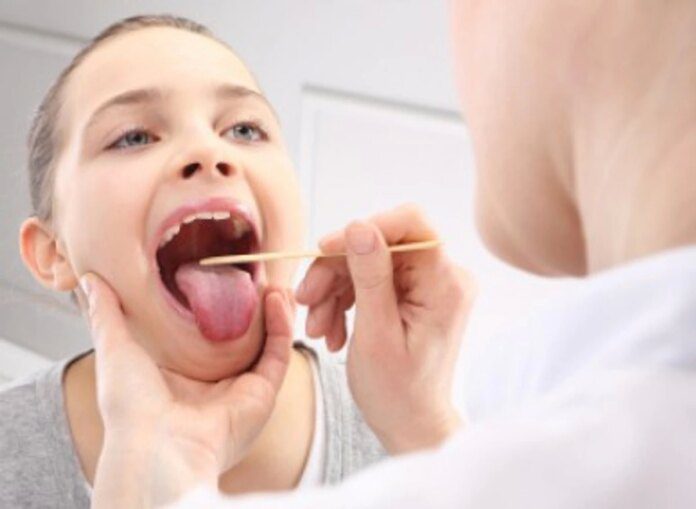
During the medical check-up, the neck is the first thing the pediatrician examines. Its redness may indicate respiratory diseases: pharyngitis, rhinopharyngitis, tonsillitis, herpangina. Also, if no other symptoms appear, it may be a contagious disease such as scarlet fever, chicken pox, measles, mumps. Depending on the evolution, a diagnosis can be accurately established and a suitable treatment recommended.
When no antibiotic is needed
If an acute pharyngitis is hidden behind a symptom such as a red throat, there will be no need to prescribe an antibiotic treatment to the child, because a virus is to blame for the onset of the condition. When the symptom appears as a result of infection with group A beta-hemolytic Streptococcus, which causes tonsillitis and pharyngitis, there is a risk of complications, requiring an antibiotic.
The detection of this bacterium or others is done with the help of a pharyngeal exudate examination, which also allows determining the type of antibiotic needed to prevent worsening of the child’s health.
Hydration, the first measure
As the appetite decreases and the child has difficulty swallowing, due to pain, stinging, inflammation of the throat, enlargement of the lymph nodes, it is important to be well hydrated. Hot drinks are the best choice, especially in the case of herpangina, when the redness in the throat is accompanied by the formation of painful, ulcerating blisters in the mandible and tonsils.
It can happen that the sick little one refuses even liquids, and dehydration is particularly dangerous, especially since the child is young. If he also refuses liquids, it is necessary to administer them intravenously, in order to avoid complications: damage to the central nervous system, convulsions.
Read also: Natural remedies for sore throat
What treatment is required
Pain, fever and inflammation of the throat are combated with the help of anti-inflammatories. It is possible for the pediatrician to indicate the alternation every 4 hours of 2 types of anti-inflammatory, ibuprofen and acetaminophen (paracetamol), until the fever is reduced, and continuing with only one of them for another 2-3 days.
Another treatment scheme consists in the administration of a single antithermic every 8 hours, and if the fever over 38.5° C returns earlier than 6 hours, another second antithermic is introduced, every 4 hours alternatively. An oropharyngeal spray with an anti-inflammatory effect is recommended to relieve the pain in the throat, and lozenges can be recommended for older children.
Expert advice

Dr. Irina Costache, pediatric specialist, Regina Maria Lujerului polyclinic, Bucharest (pediatricblog.info)
The diagnosis of “red throat” is one of a symptom and less of a disease in itself, the subsequent evolution revealing which condition accompanies the pharyngeal hyperemia. Many times, the diagnosis cannot be made on the first day of the disease, as is the case with roseola infantum, when the exact establishment of the etiology can come after 3-5 days of fever that accompany the redness in the throat and end with the appearance of an eruption of the type small red spots (macules), which fade on their own in a few days.






































